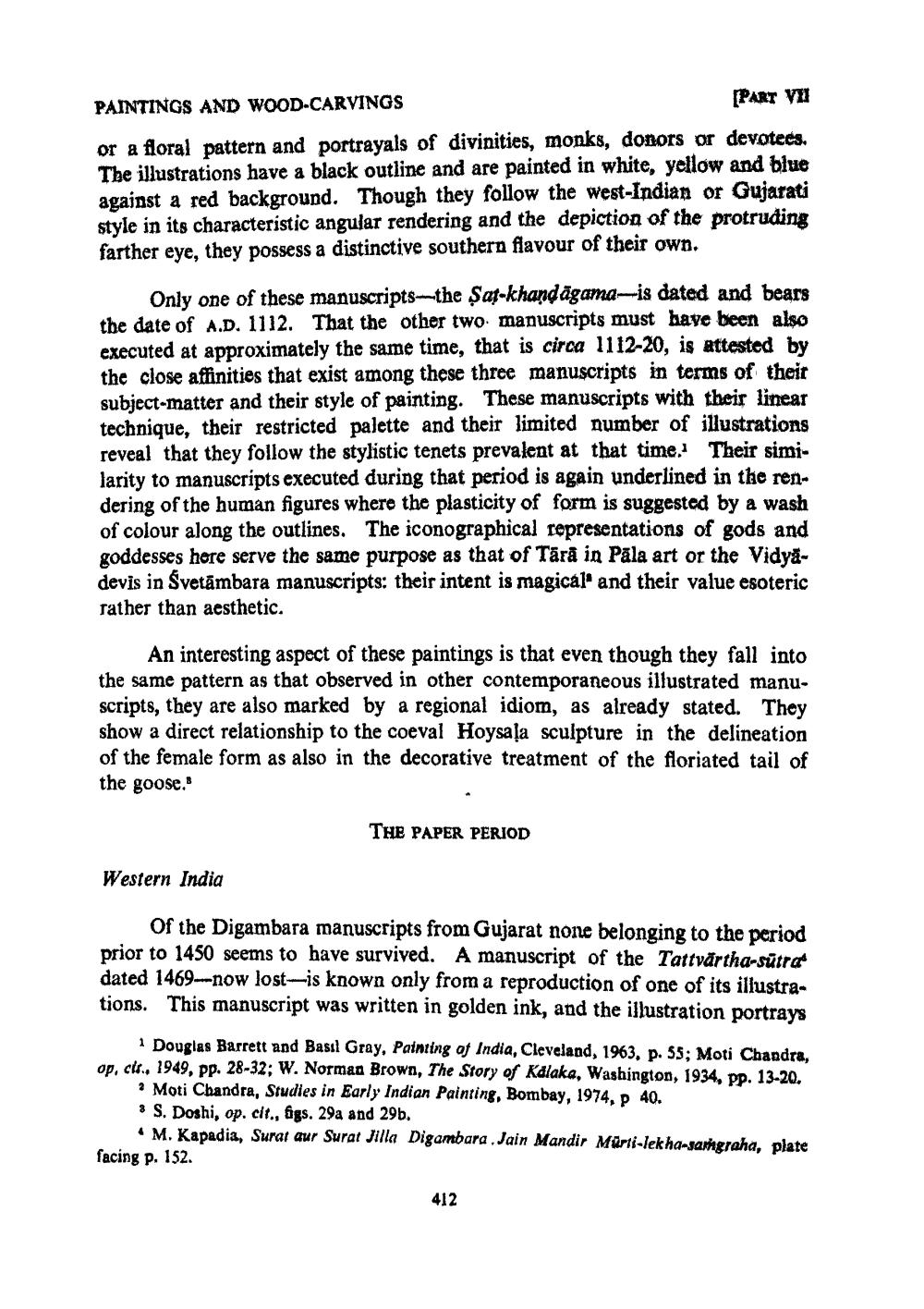________________
PAINTINGS AND WOOD-CARVINGS
[PART VI
or a floral pattern and portrayals of divinities, monks, donors or devotees. The illustrations have a black outline and are painted in white, yellow and blue against a red background. Though they follow the west-Indian or Gujarati style in its characteristic angular rendering and the depiction of the protruding farther eye, they possess a distinctive southern flavour of their own.
Only one of these manuscripts--the Sat-khandägama-is dated and bears the date of A.D. 1112. That the other two manuscripts must have been also executed at approximately the same time, that is circa 1112-20, is attested by the close affinities that exist among these three manuscripts in terms of their subject-matter and their style of painting. These manuscripts with their linear technique, their restricted palette and their limited number of illustrations reveal that they follow the stylistic tenets prevalent at that time. Their similarity to manuscripts executed during that period is again underlined in the rendering of the human figures where the plasticity of form is suggested by a wash of colour along the outlines. The iconographical representations of gods and goddesses here serve the same purpose as that of Tārā in Pāla art or the Vidyadevis in Svetāmbara manuscripts: their intent is magical' and their value esoteric rather than aesthetic.
An interesting aspect of these paintings is that even though they fall into the same pattern as that observed in other contemporaneous illustrated manuscripts, they are also marked by a regional idiom, as already stated. They show a direct relationship to the coeval Hoysala sculpture in the delineation of the female form as also in the decorative treatment of the floriated tail of the goose.
THE PAPER PERIOD
Western India
Of the Digambara manuscripts from Gujarat none belonging to the period prior to 1450 seems to have survived. A manuscript of the Tattvärtha-sūtra dated 1469_--now lost-is known only from a reproduction of one of its illustrations. This manuscript was written in golden ink, and the illustration portrays
1 Douglas Barrett and Basil Gray, Painting of India, Cleveland, 1963, p. 55; Moti Chandra, op, cls., 1949, pp. 28-32; W. Norman Brown, The Story of Kalaka, Washington, 1934, pp. 13-20.
? Moti Chandra, Studies in Early Indian Painting, Bombay, 1974, 40. : S. Doshi, op. cit., figs. 29a and 29b.
M. Kapadia, Surat aur Surat Jilla Digambara Jain Mandir Mürti-lekha sangraha, plate facing p. 192.
412




